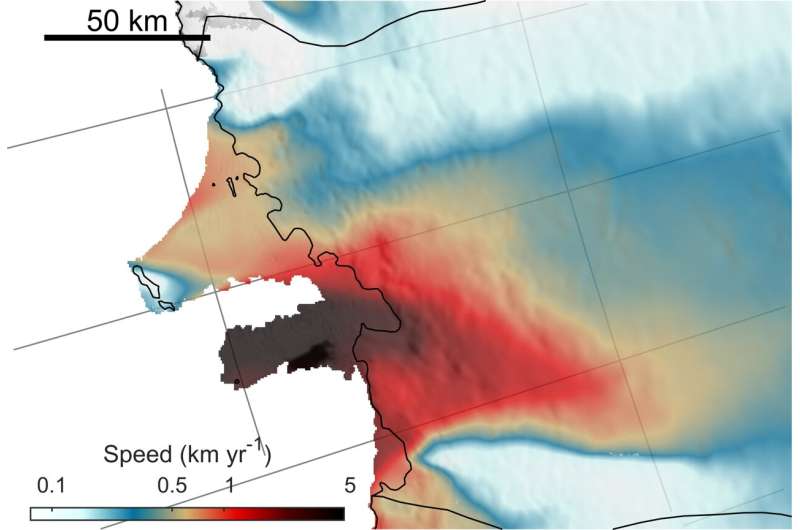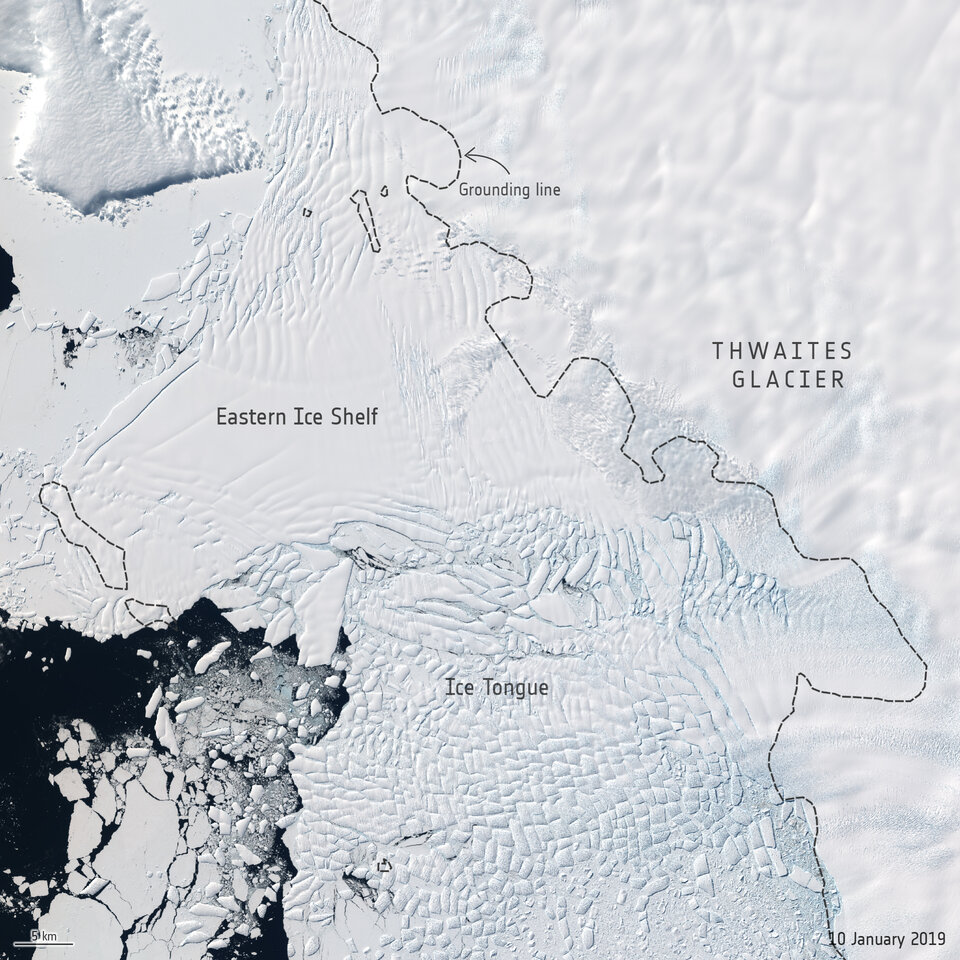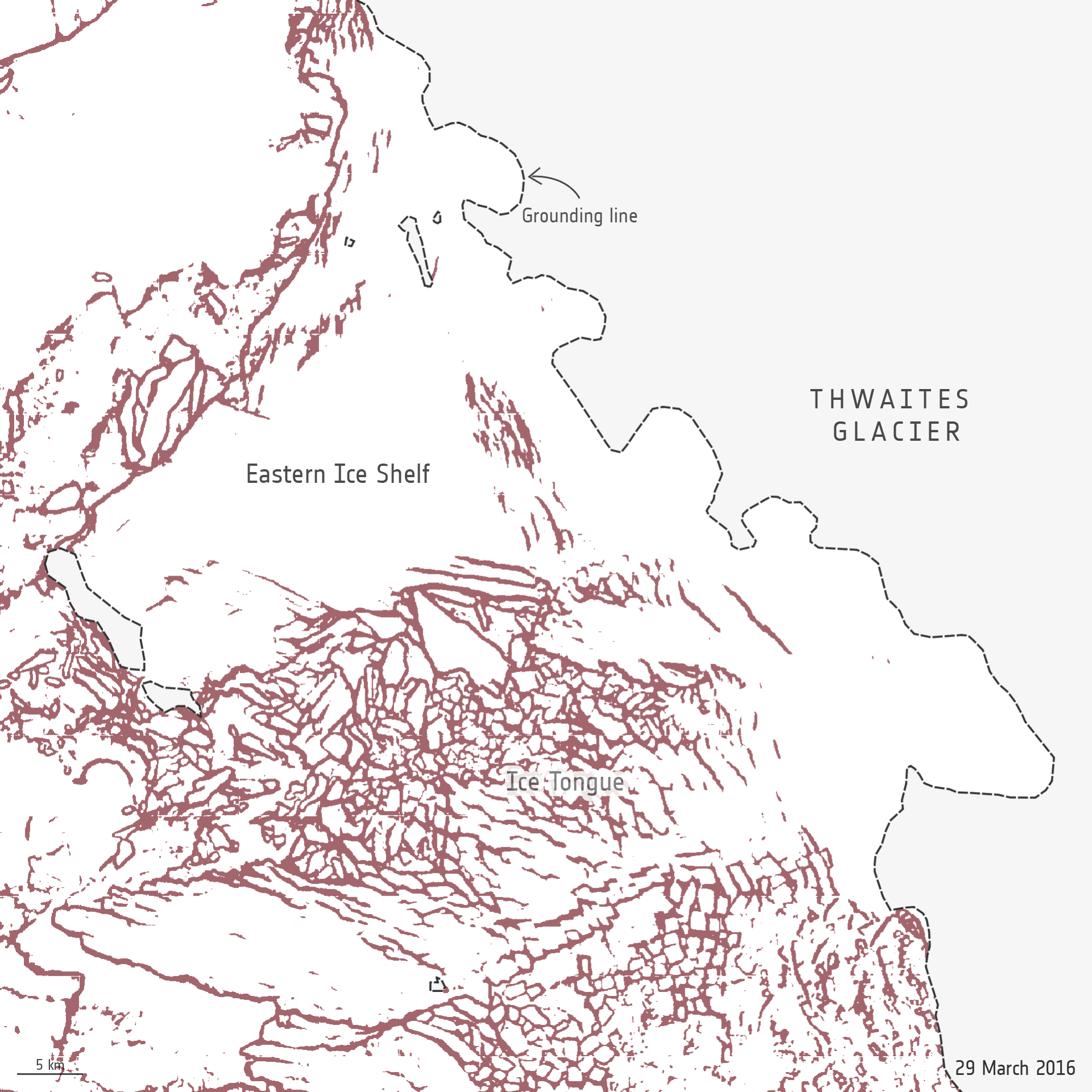AI Developed to Monitor Changes to the Globally Important Thwaites Glacierhttps://phys.org/news/2023-01-ai-globally-important-thwaites-glacier.html Scientists have developed artificial intelligence techniques to track the development of crevasses—or fractures—on the Thwaites Glacier Ice Tongue in west Antarctica.
Scientists have developed artificial intelligence techniques to track the development of crevasses—or fractures—on the Thwaites Glacier Ice Tongue in west Antarctica.Published today (Monday, January 9) in the journal
Nature Geoscience, the research focused on a part of the glacier system where the ice flows into the sea and begins to float. Where this happens is known as the grounding line and it forms the start of the Thwaites Eastern Ice Shelf and the Thwaites Glacier Ice Tongue, which is also an ice shelf.
The scientists wanted to know if crevassing or fracture formation in the glacier was more likely to occur with changes to the speed of the ice flow.
Using machine learning, the researchers taught a computer to look at radar satellite images and identify changes over the last decade. The images were taken by the European Space Agency's Sentinel-1 satellites, which can "see" through the top layer of snow and onto the glacier, revealing the fractured surface of the ice normally hidden from sight.
The analysis revealed that over the last six years, the Thwaites Glacier ice tongue has sped up and slowed down twice, by around 40% each time—from four km/year to six km/year before slowing. This is a a substantial increase in the magnitude and frequency of speed change compared with past records.
The study found a complex interplay between crevasse formation and speed of the ice flow. When the ice flow quickens or slows, more crevasses are likely to form. In turn, the increase in crevasses causes the ice to change speed as the level of friction between the ice and underlying rock alters.
Dr. Anna Hogg, a glaciologist in the Satellite Ice Dynamics group at Leeds and an author on the study, said, "Dynamic changes on ice shelves are traditionally thought to occur on timescales of decades to centuries, so it was surprising to see this huge glacier speed up and slow down so quickly."
"The study also demonstrates the key role that fractures play in un-corking the flow of ice—a process known as 'unbuttressing.' Ice sheet models must be evolved to account for the fact that ice can fracture, which will allow us to measure future sea level contributions more accurately."
Trystan Surawy-Stepney,
Episodic dynamic change linked to damage on the thwaites glacier ice tongue,
Nature Geoscience (2023)
https://www.nature.com/articles/s41561-022-01097-9Abstract
The stability and dynamics of Thwaites Glacier depend on the structural properties of its marine terminus; however, the relationship between these variables on the floating ice tongue is poorly understood. Here we present a six-year record of ice speed, derived from satellite observations starting in 2015, showing two large-magnitude (approximately 30–45%) and prolonged (approximately one to two years) cycles of speed variation across the ice tongue. Using an automated, deep learning-based method of extracting high-resolution fracture maps from satellite imagery, we detail periods of increasing fracture development and subsequent reconsolidation in the ice tongue shear margin that coincide with the observed speed changes. Inverse modelling using the BISICLES ice-sheet model indicates that the variation in ice speed can be accounted for by these observed changes to the spatial pattern of fracturing. This study provides further evidence of direct coupling between fracturing and dynamic variability in West Antarctica but indicates that increased fracturing and associated speed changes are reversible on one- to two-year timescales. We suggest that fracturing does not necessarily lead to positive feedback with glacier acceleration on these timescales and that damage process modelling is important for accurately predicting the evolution of the Antarctic Ice Sheet.---------------------------------------------------------------
Sentinel-1 and AI Uncover Glacier Crevasseshttps://www.esa.int/Applications/Observing_the_Earth/Copernicus/Sentinel-1/Sentinel-1_and_AI_uncover_glacier_crevassesScientists have developed a new Artificial Intelligence, or AI, technique using radar images from Europe’s Copernicus Sentinel-1 satellite mission, to reveal how the Thwaites Glacier Ice Tongue in West Antarctica is being damaged by squeezing and stretching as it flows from the middle of the continent to the coast. Being able to track fractures and crevasses in the ice beneath the overlying snow is key to better predicting the fate of floating ice tongues under climate change.


